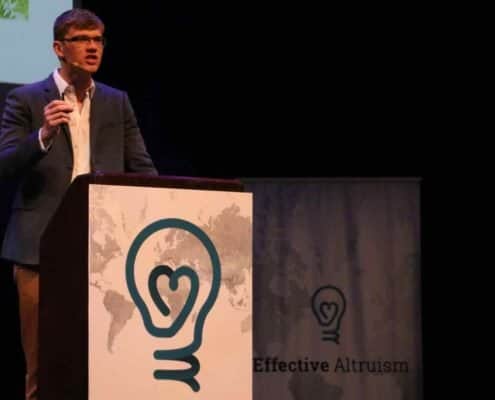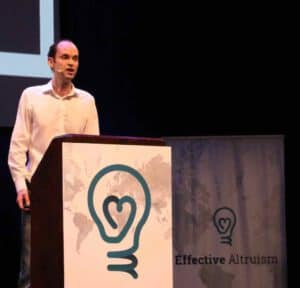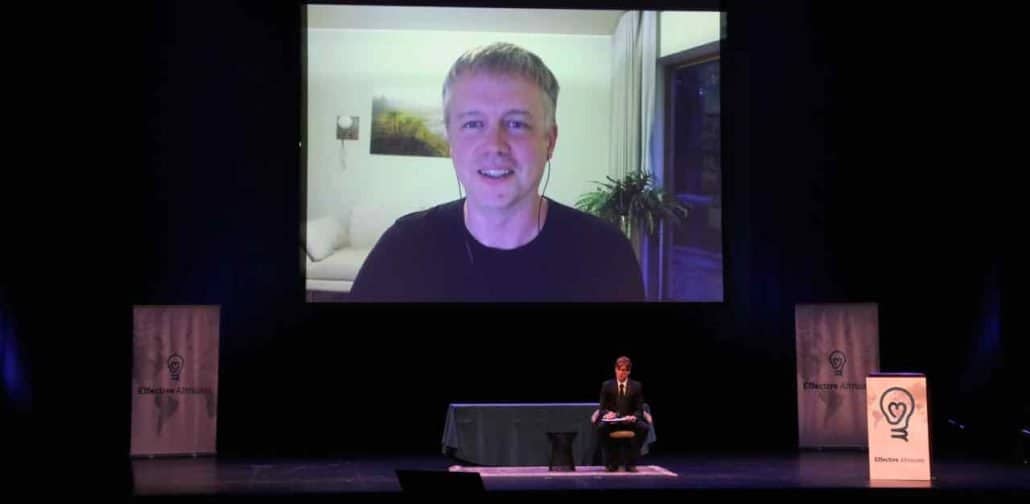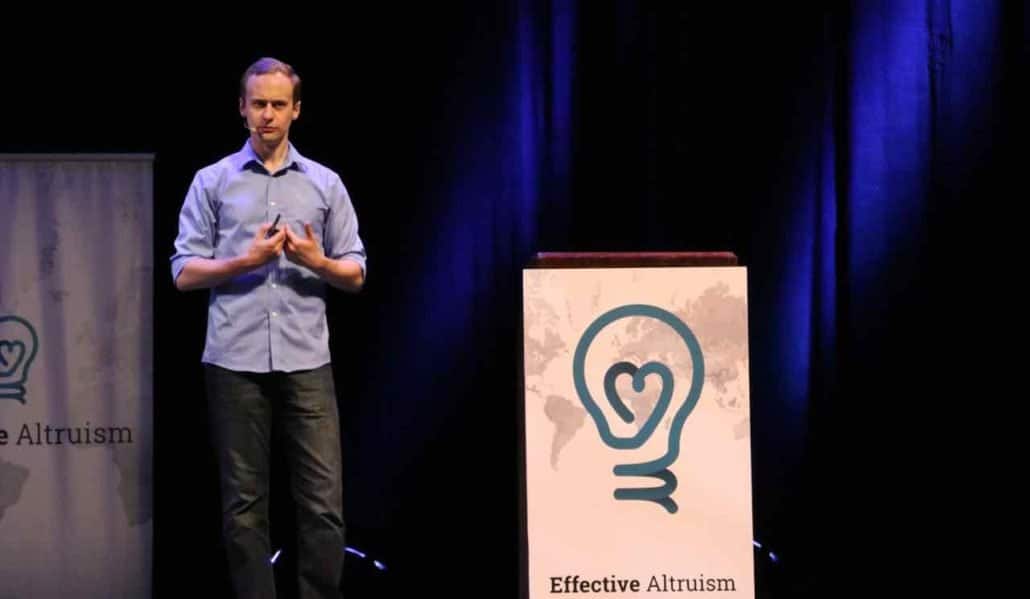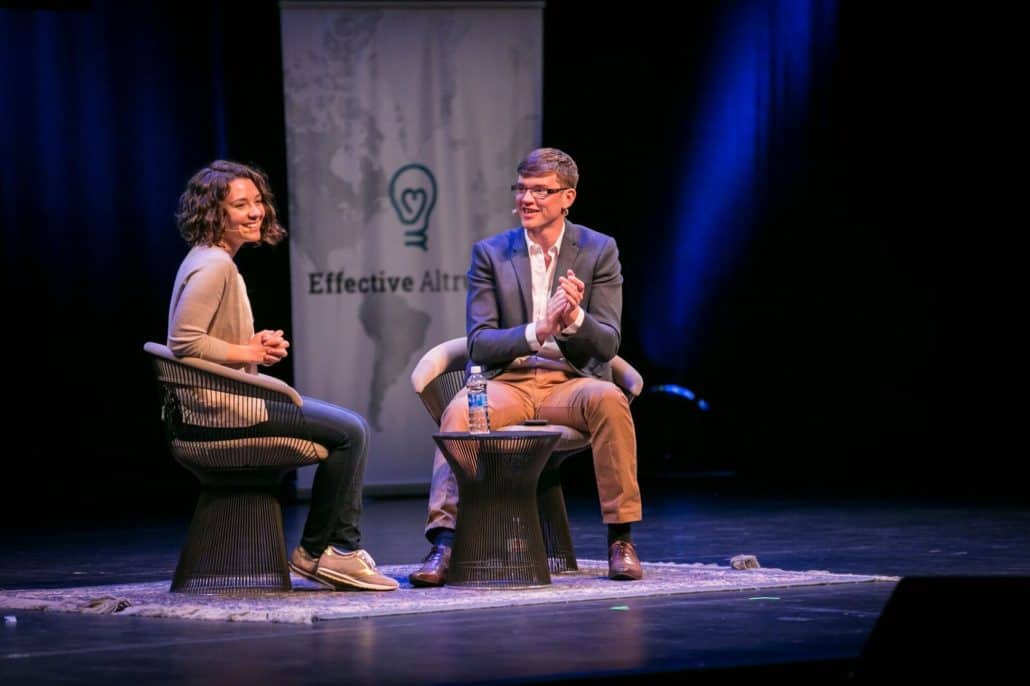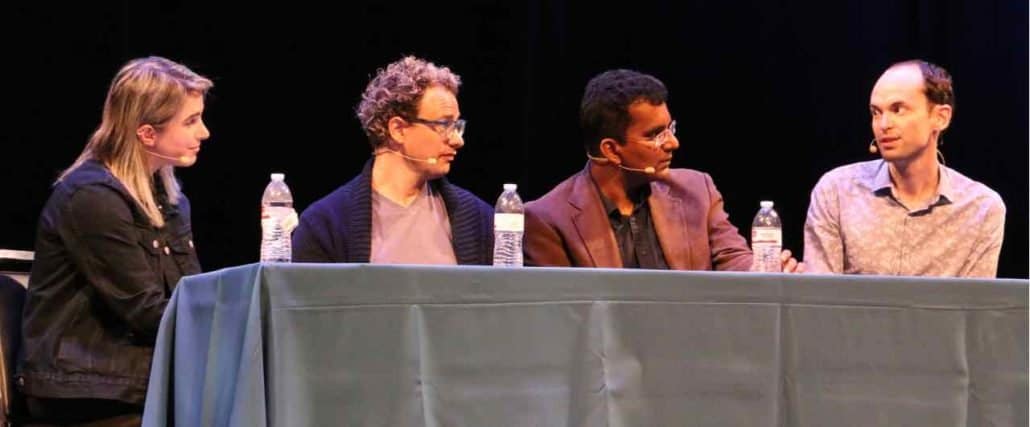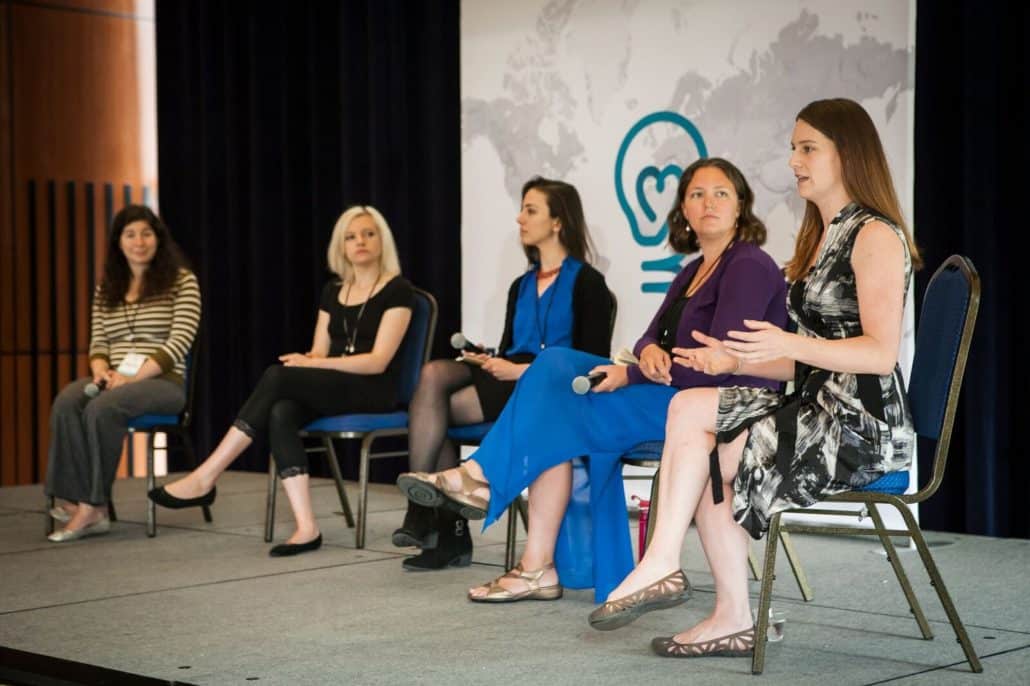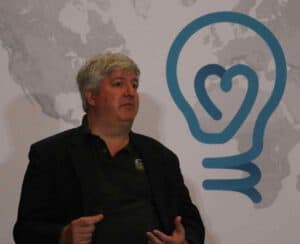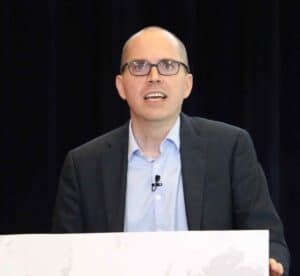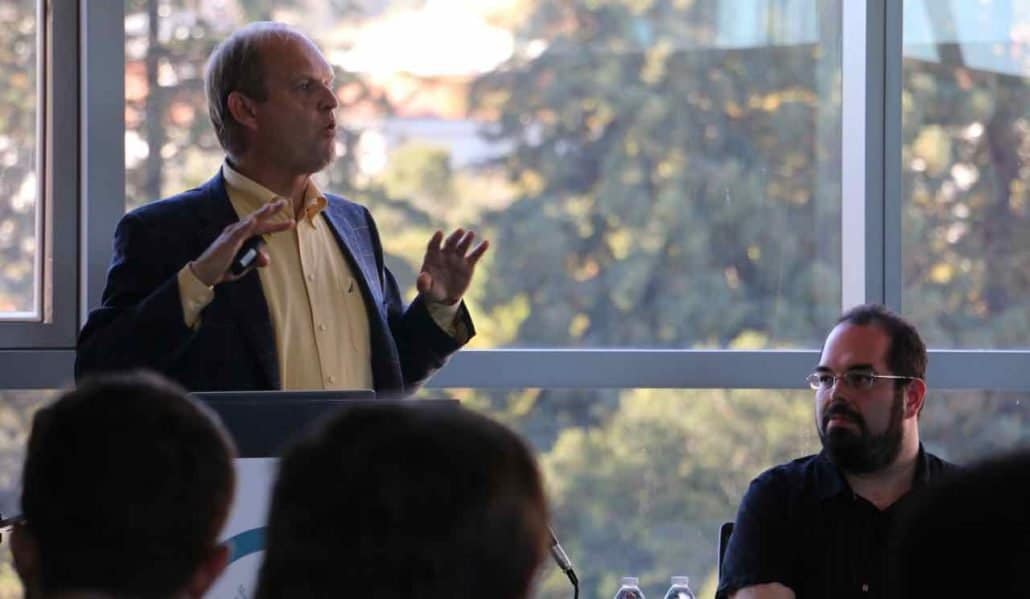For FLI, 2016 was a great year, full of our own success, but also great achievements from so many of the organizations we work with. Max, Meia, Anthony, Victoria, Richard, Lucas, David, and Ariel discuss what they were most excited to see in 2016 and what they’re looking forward to in 2017.
AGUIRRE: I’m Anthony Aguirre. I am a professor of physics at UC Santa Cruz, and I’m one of the founders of the Future of Life Institute.
STANLEY: I’m David Stanley, and I’m currently working with FLI as a Project Coordinator/Volunteer Coordinator.
PERRY: My name is Lucas Perry, and I’m a Project Coordinator with the Future of Life Institute.
TEGMARK: I’m Max Tegmark, and I have the fortune to be the President of the Future of Life Institute.
CHITA-TEGMARK: I’m Meia Chita-Tegmark, and I am a co-founder of the Future of Life Institute.
MALLAH: Hi, I’m Richard Mallah. I’m the Director of AI Projects at the Future of Life Institute.
KRAKOVNA: Hi everyone, I am Victoria Krakovna, and I am one of the co-founders of FLI. I’ve recently taken up a position at Google DeepMind working on AI safety.
CONN: And I’m Ariel Conn, the Director of Media and Communications for FLI. 2016 has certainly had its ups and downs, and so at FLI, we count ourselves especially lucky to have had such a successful year. We’ve continued to progress with the field of AI safety research, we’ve made incredible headway with our nuclear weapons efforts, and we’ve worked closely with many amazing groups and individuals. On that last note, much of what we’ve been most excited about throughout 2016 is the great work these other groups in our fields have also accomplished.
Over the last couple of weeks, I’ve sat down with our founders and core team to rehash their highlights from 2016 and also to learn what they’re all most looking forward to as we move into 2017.
To start things off, Max gave a summary of the work that FLI does and why 2016 was such a success.
TEGMARK: What I was most excited by in 2016 was the overall sense that people are taking seriously this idea – that we really need to win this race between the growing power of our technology and the wisdom with which we manage it. Every single way in which 2016 is better than the Stone Age is because of technology, and I’m optimistic that we can create a fantastic future with tech as long as we win this race. But in the past, the way we’ve kept one step ahead is always by learning from mistakes. We invented fire, messed up a bunch of times, and then invented the fire extinguisher. We at the Future of Life Institute feel that that strategy of learning from mistakes is a terrible idea for more powerful tech, like nuclear weapons, artificial intelligence, and things that can really alter the climate of our globe.
Now, in 2016 we saw multiple examples of people trying to plan ahead and to avoid problems with technology instead of just stumbling into them. In April, we had world leaders getting together and signing the Paris Climate Accords. In November, the United Nations General Assembly voted to start negotiations about nuclear weapons next year. The question is whether they should actually ultimately be phased out; whether the nations that don’t have nukes should work towards stigmatizing building more of them – with the idea that 14,000 is way more than anyone needs for deterrence. And – just the other day – the United Nations also decided to start negotiations on the possibility of banning lethal autonomous weapons, which is another arms race that could be very, very destabilizing. And if we keep this positive momentum, I think there’s really good hope that all of these technologies will end up having mainly beneficial uses.
Today, we think of our biologist friends as mainly responsible for the fact that we live longer and healthier lives, and not as those guys who make the bioweapons. We think of chemists as providing us with better materials and new ways of making medicines, not as the people who built chemical weapons and are all responsible for global warming. We think of AI scientists as – I hope, when we look back on them in the future – as people who helped make the world better, rather than the ones who just brought on the AI arms race. And it’s very encouraging to me that as much as people in general – but also the scientists in all these fields – are really stepping up and saying, “Hey, we’re not just going to invent this technology, and then let it be misused. We’re going to take responsibility for making sure that the technology is used beneficially.”
CONN: And beneficial AI is what FLI is primarily known for. So what did the other members have to say about AI safety in 2016? We’ll hear from Anthony first.
AGUIRRE: I would say that what has been great to see over the last year or so is the AI safety and beneficiality research field really growing into an actual research field. When we ran our first conference a couple of years ago, they were these tiny communities who had been thinking about the impact of artificial intelligence in the future and in the long-term future. They weren’t really talking to each other; they weren’t really doing much actual research – there wasn’t funding for it. So, to see in the last few years that transform into something where it takes a massive effort to keep track of all the stuff that’s being done in this space now. All the papers that are coming out, the research groups – you sort of used to be able to just find them all, easily identified. Now, there’s this huge worldwide effort and long lists, and it’s difficult to keep track of. And that’s an awesome problem to have.
As someone who’s not in the field, but sort of watching the dynamics of the research community, that’s what’s been so great to see. A research community that wasn’t there before really has started, and I think in the past year we’re seeing the actual results of that research start to come in. You know, it’s still early days. But it’s starting to come in, and we’re starting to see papers that have been basically created using these research talents and the funding that’s come through the Future of Life Institute. It’s been super gratifying. And seeing that it’s a fairly large amount of money – but fairly small compared to the total amount of research funding in artificial intelligence or other fields – but because it was so funding-starved and talent-starved before, it’s just made an enormous impact. And that’s been nice to see.
CONN: Not surprisingly, Richard was equally excited to see AI safety becoming a field of ever-increasing interest for many AI groups.
MALLAH: I’m most excited by the continued mainstreaming of AI safety research. There are more and more publications coming out by places like DeepMind and Google Brain that have really lent additional credibility to the space, as well as a continued uptake of more and more professors, and postdocs, and grad students from a wide variety of universities entering this space. And, of course, OpenAI has come out with a number of useful papers and resources.
I’m also excited that governments have really realized that this is an important issue. So, while the White House reports have come out recently focusing more on near-term AI safety research, they did note that longer-term concerns like superintelligence are not necessarily unreasonable for later this century. And that they do support – right now – funding safety work that can scale toward the future, which is really exciting. We really need more funding coming into the community for that type of research. Likewise, other governments – like the U.K. and Japan, Germany – have all made very positive statements about AI safety in one form or another. And other governments around the world.
CONN: In addition to seeing so many other groups get involved in AI safety, Victoria was also pleased to see FLI taking part in so many large AI conferences.
KRAKOVNA: I think I’ve been pretty excited to see us involved in these AI safety workshops at major conferences. So on the one hand, our conference in Puerto Rico that we organized ourselves was very influential and helped to kick-start making AI safety more mainstream in the AI community. On the other hand, it felt really good in 2016 to complement that with having events that are actually part of major conferences that were co-organized by a lot of mainstream AI researchers. I think that really was an integral part of the mainstreaming of the field. For example, I was really excited about the Reliable Machine Learning workshop at ICML that we helped to make happen. I think that was something that was quite positively received at the conference, and there was a lot of good AI safety material there.
CONN: And of course, Victoria was also pretty excited about some of the papers that were published this year connected to AI safety, many of which received at least partial funding from FLI.
KRAKOVNA: There were several excellent papers in AI safety this year, addressing core problems in safety for machine learning systems. For example, there was a paper from Stuart Russell’s lab published at NIPS, on cooperative IRL. This is about teaching AI what humans want – how to train an RL algorithm to learn the right reward function that reflects what humans want it to do. DeepMind and FHI published a paper at UAI on safely interruptible agents, that formalizes what it means for an RL agent not to have incentives to avoid shutdown. MIRI made an impressive breakthrough with their paper on logical inductors. I’m super excited about all these great papers coming out, and that our grant program contributed to these results.
CONN: For Meia, the excitement about AI safety went beyond just the technical aspects of artificial intelligence.
CHITA-TEGMARK: I am very excited about the dialogue that FLI has catalyzed – and also engaged in – throughout 2016, and especially regarding the impact of technology on society. My training is in psychology; I’m a psychologist. So I’m very interested in the human aspect of technology development. I’m very excited about questions like, how are new technologies changing us? How ready are we to embrace new technologies? Or how our psychological biases may be clouding our judgement about what we’re creating and the technologies that we’re putting out there. Are these technologies beneficial for our psychological well-being, or are they not?
So it has been extremely interesting for me to see that these questions are being asked more and more, especially by artificial intelligence developers and also researchers. I think it’s so exciting to be creating technologies that really force us to grapple with some of the most fundamental aspects, I would say, of our own psychological makeup. For example, our ethical values, our sense of purpose, our well-being, maybe our biases and shortsightedness and shortcomings as biological human beings. So I’m definitely very excited about how the conversation regarding technology – and especially artificial intelligence – has evolved over the last year. I like the way it has expanded to capture this human element, which I find so important. But I’m also so happy to feel that FLI has been an important contributor to this conversation.
CONN: Meanwhile, as Max described earlier, FLI has also gotten much more involved in decreasing the risk of nuclear weapons, and Lucas helped spearhead one of our greatest accomplishments of the year.
PERRY: One of the things that I was most excited about was our success with our divestment campaign. After a few months, we had great success in our own local Boston area with helping the City of Cambridge to divest its $1 billion portfolio from nuclear weapon producing companies. And we see this as a really big and important victory within our campaign to help institutions, persons, and universities to divest from nuclear weapons producing companies.
CONN: And in order to truly be effective we need to reach an international audience, which is something Dave has been happy to see grow this year.
STANLEY: I’m mainly excited about – at least, in my work – the increasing involvement and response we’ve had from the international community in terms of reaching out about these issues. I think it’s pretty important that we engage the international community more, and not just academics. Because these issues – things like nuclear weapons and the increasing capabilities of artificial intelligence – really will affect everybody. And they seem to be really underrepresented in mainstream media coverage as well.
So far, we’ve had pretty good responses just in terms of volunteers from many different countries around the world being interested in getting involved to help raise awareness in their respective communities, either through helping develop apps for us, or translation, or promoting just through social media these ideas in their little communities.
CONN: Many FLI members also participated in both local and global events and projects, like the following we’re about to hear from Victoria, Richard, Lucas and Meia.
KRAKOVNA: The EAGX Oxford Conference was a fairly large conference. It was very well organized, and we had a panel there with Demis Hassabis, Nate Soares from MIRI, Murray Shanahan from Imperial, Toby Ord from FHI, and myself. I feel like overall, that conference did a good job of, for example, connecting the local EA community with the people at DeepMind, who are really thinking about AI safety concerns like Demis and also Sean Legassick, who also gave a talk about the ethics and impacts side of things. So I feel like that conference overall did a good job of connecting people who are thinking about these sorts of issues, which I think is always a great thing.
MALLAH: I was involved in this endeavor with IEEE regarding autonomy and ethics in autonomous systems, sort of representing FLI’s positions on things like autonomous weapons and long-term AI safety. One thing that came out this year – just a few days ago, actually, due to this work from IEEE – is that the UN actually took the report pretty seriously, and it may have influenced their decision to take up the issue of autonomous weapons formally next year. That’s kind of heartening.
PERRY: A few different things that I really enjoyed doing were giving a few different talks at Duke and Boston College, and a local effective altruism conference. I’m also really excited about all the progress we’re making on our nuclear divestment application. So this is an application that will allow anyone to search their mutual fund and see whether or not their mutual funds have direct or indirect holdings in nuclear weapons-producing companies.
CHITA-TEGMARK: So, a wonderful moment for me was at the conference organized by Yann LeCun in New York at NYU, when Daniel Kahneman, one of my thinker-heroes, asked a very important question that really left the whole audience in silence. He asked, “Does this make you happy? Would AI make you happy? Would the development of a human-level artificial intelligence make you happy?” I think that was one of the defining moments, and I was very happy to participate in this conference.
Later on, David Chalmers, another one of my thinker-heroes – this time, not the psychologist but the philosopher – organized another conference, again at NYU, trying to bring philosophers into this very important conversation about the development of artificial intelligence. And again, I felt there too, that FLI was able to contribute and bring in this perspective of the social sciences on this issue.
CONN: Now, with 2016 coming to an end, it’s time to turn our sites to 2017, and FLI is excited for this new year to be even more productive and beneficial.
TEGMARK: We at the Future of Life Institute are planning to focus primarily on artificial intelligence, and on reducing the risk of accidental nuclear war in various ways. We’re kicking off by having an international conference on artificial intelligence, and then we want to continue throughout the year providing really high-quality and easily accessible information on all these key topics, to help inform on what happens with climate change, with nuclear weapons, with lethal autonomous weapons, and so on.
And looking ahead here, I think it’s important right now – especially since a lot of people are very stressed out about the political situation in the world, about terrorism, and so on – to not ignore the positive trends and the glimmers of hope we can see as well.
CONN: As optimistic as FLI members are about 2017, we’re all also especially hopeful and curious to see what will happen with continued AI safety research.
AGUIRRE: I would say I’m looking forward to seeing in the next year more of the research that comes out, and really sort of delving into it myself, and understanding how the field of artificial intelligence and artificial intelligence safety is developing. And I’m very interested in this from the forecast and prediction standpoint.
I’m interested in trying to draw some of the AI community into really understanding how artificial intelligence is unfolding – in the short term and the medium term – as a way to understand, how long do we have? Is it, you know, if it’s really infinity, then let’s not worry about that so much, and spend a little bit more on nuclear weapons and global warming and biotech, because those are definitely happening. If human-level AI were 8 years away… honestly, I think we should be freaking out right now. And most people don’t believe that, I think most people are in the middle it seems, of thirty years or fifty years or something, which feels kind of comfortable. Although it’s not that long, really, on the big scheme of things. But I think it’s quite important to know now, which is it? How fast are these things, how long do we really have to think about all of the issues that FLI has been thinking about in AI? How long do we have before most jobs in industry and manufacturing are replaceable by a robot being slotted in for a human? That may be 5 years, it may be fifteen… It’s probably not fifty years at all. And having a good forecast on those good short-term questions I think also tells us what sort of things we have to be thinking about now.
And I’m interested in seeing how this massive AI safety community that’s started develops. It’s amazing to see centers kind of popping up like mushrooms after a rain all over and thinking about artificial intelligence safety. This partnership on AI between Google and Facebook and a number of other large companies getting started. So to see how those different individual centers will develop and how they interact with each other. Is there an overall consensus on where things should go? Or is it a bunch of different organizations doing their own thing? Where will governments come in on all of this? I think it will be interesting times. So I look forward to seeing what happens, and I will reserve judgement in terms of my optimism.
KRAKOVNA: I’m really looking forward to AI safety becoming even more mainstream, and even more of the really good researchers in AI giving it serious thought. Something that happened in the past year that I was really excited about, that I think is also pointing in this direction, is the research agenda that came out of Google Brain called “Concrete Problems in AI Safety.” And I think I’m looking forward to more things like that happening, where AI safety becomes sufficiently mainstream that people who are working in AI just feel inspired to do things like that and just think from their own perspectives: what are the important problems to solve in AI safety? And work on them.
I’m a believer in the portfolio approach with regards to AI safety research, where I think we need a lot of different research teams approaching the problems from different angles and making different assumptions, and hopefully some of them will make the right assumption. I think we are really moving in the direction in terms of more people working on these problems, and coming up with different ideas. And I look forward to seeing more of that in 2017. I think FLI can also help continue to make this happen.
MALLAH: So, we’re in the process of fostering additional collaboration among people in the AI safety space. And we will have more announcements about this early next year. We’re also working on resources to help people better visualize and better understand the space of AI safety work, and the opportunities there and the work that has been done. Because it’s actually quite a lot.
I’m also pretty excited about fostering continued theoretical work and practical work in making AI more robust and beneficial. The work in value alignment, for instance, is not something we see supported in mainstream AI research. And this is something that is pretty crucial to the way that advanced AIs will need to function. It won’t be very explicit instructions to them; they’ll have to be making decision based on what they think is right. And what is right? It’s something that… or even structuring the way to think about what is right requires some more research.
STANLEY: We’ve had pretty good success at FLI in the past few years helping to legitimize the field of AI safety. And I think it’s going to be important because AI is playing a large role in industry and there’s a lot of companies working on this, and not just in the US. So I think increasing international awareness about AI safety is going to be really important.
CHITA-TEGMARK: I believe that the AI community has raised some very important questions in 2016 regarding the impact of AI on society. I feel like 2017 should be the year to make progress on these questions, and actually research them and have some answers to them. For this, I think we need more social scientists – among people from other disciplines – to join this effort of really systematically investigating what would be the optimal impact of AI on people. I hope that in 2017 we will have more research initiatives, that we will attempt to systematically study other burning questions regarding the impact of AI on society. Some examples are: how can we ensure the psychological well-being for people while AI creates lots of displacement on the job market as many people predict. How do we optimize engagement with technology, and withdrawal from it also? Will some people be left behind, like the elderly or the economically disadvantaged? How will this affect them, and how will this affect society at large?
What about withdrawal from technology? What about satisfying our need for privacy? Will we be able to do that, or is the price of having more and more customized technologies and more and more personalization of the technologies we engage with… will that mean that we will have no privacy anymore, or that our expectations of privacy will be very seriously violated? I think these are some very important questions that I would love to get some answers to. And my wish, and also my resolution, for 2017 is to see more progress on these questions, and to hopefully also be part of this work and answering them.
PERRY: In 2017 I’m very interested in pursuing the landscape of different policy and principle recommendations from different groups regarding artificial intelligence. I’m also looking forward to expanding out nuclear divestment campaign by trying to introduce divestment to new universities, institutions, communities, and cities.
CONN: In fact, some experts believe nuclear weapons pose a greater threat now than at any time during our history.
TEGMARK: I personally feel that the greatest threat to the world in 2017 is one that the newspapers almost never write about. It’s not terrorist attacks, for example. It’s the small but horrible risk that the U.S. and Russia for some stupid reason get into an accidental nuclear war against each other. We have 14,000 nuclear weapons, and this war has almost happened many, many times. So, actually what’s quite remarkable and really gives a glimmer of hope is that – however people may feel about Putin and Trump – the fact is they are both signaling strongly that they are eager to get along better. And if that actually pans out and they manage to make some serious progress in nuclear arms reduction, that would make 2017 the best year for nuclear weapons we’ve had in a long, long time, reversing this trend of ever greater risks with ever more lethal weapons.
CONN: Some FLI members are also looking beyond nuclear weapons and artificial intelligence, as I learned when I asked Dave about other goals he hopes to accomplish with FLI this year.
STANLEY: Definitely having the volunteer team – particularly the international volunteers – continue to grow, and then scale things up. Right now, we have a fairly committed core of people who are helping out, and we think that they can start recruiting more people to help out in their little communities, and really making this stuff accessible. Not just to academics, but to everybody. And that’s also reflected in the types of people we have working for us as volunteers. They’re not just academics. We have programmers, linguists, people having just high school degrees all the way up to Ph.D.’s, so I think it’s pretty good that this varied group of people can get involved and contribute, and also reach out to other people they can relate to.
CONN: In addition to getting more people involved, Meia also pointed out that one of the best ways we can help ensure a positive future is to continue to offer people more informative content.
CHITA-TEGMARK: Another thing that I’m very excited about regarding our work here at the Future of Life Institute is this mission of empowering people to information. I think information is very powerful and can change the way people approach things: they can change their beliefs, their attitudes, and their behaviors as well. And by creating ways in which information can be readily distributed to the people, and with which they can engage very easily, I hope that we can create changes. For example, we’ve had a series of different apps regarding nuclear weapons that I think have contributed a lot to peoples knowledge and has brought this issue to the forefront of their thinking.
CONN: Yet as important as it is to highlight the existential risks we must address to keep humanity safe, perhaps it’s equally important to draw attention to the incredible hope we have for the future if we can solve these problems. Which is something both Richard and Lucas brought up for 2017.
MALLAH: I’m excited about trying to foster more positive visions of the future, so focusing on existential hope aspects of the future. Which are kind of the flip side of existential risks. So we’re looking at various ways of getting people to be creative about understanding some of the possibilities, and how to differentiate the paths between the risks and the benefits.
PERRY: Yeah, I’m also interested in creating and generating a lot more content that has to do with existential hope. Given the current global political climate, it’s all the more important to focus on how we can make the world better.
CONN: And on that note, I want to mention one of the most amazing things I discovered this past year. It had nothing to do with technology, and everything to do with people. Since starting at FLI, I’ve met countless individuals who are dedicating their lives to trying to make the world a better place. We may have a lot of problems to solve, but with so many groups focusing solely on solving them, I’m far more hopeful for the future. There are truly too many individuals that I’ve met this year to name them all, so instead, I’d like to provide a rather long list of groups and organizations I’ve had the pleasure to work with this year. A link to each group can be found at futureoflife.org/2016, and I encourage you to visit them all to learn more about the wonderful work they’re doing. In no particular order, they are:
Machine Intelligence Research Institute
Future of Humanity Institute
Global Catastrophic Risk Institute
Center for the Study of Existential Risk
Ploughshares Fund
Bulletin of Atomic Scientists
Open Philanthropy Project
Union of Concerned Scientists
The William Perry Project
ReThink Media
Don’t Bank on the Bomb
Federation of American Scientists
Massachusetts Peace Action
IEEE (Institute for Electrical and Electronics Engineers)
Center for Human-Compatible Artificial Intelligence
Center for Effective Altruism
Center for Applied Rationality
Foresight Institute
Leverhulme Center for the Future of Intelligence
Global Priorities Project
Association for the Advancement of Artificial Intelligence
International Joint Conference on Artificial Intelligence
Partnership on AI
The White House Office of Science and Technology Policy
The Future Society at Harvard Kennedy School
I couldn’t be more excited to see what 2017 holds in store for us, and all of us at FLI look forward to doing all we can to help create a safe and beneficial future for everyone. But to end on an even more optimistic note, I turn back to Max.
TEGMARK: Finally, I’d like – because I spend a lot of my time thinking about our universe – to remind everybody that we shouldn’t just be focused on the next election cycle. We have not decades, but billions of years of potentially awesome future for life, on Earth and far beyond. And it’s so important to not let ourselves get so distracted by our everyday little frustrations that we lose sight of these incredible opportunities that we all stand to gain from if we can get along, and focus, and collaborate, and use technology for good.


